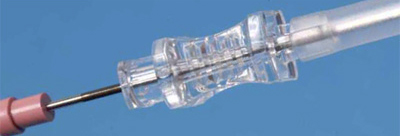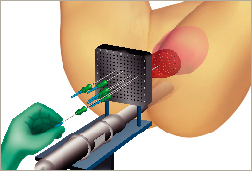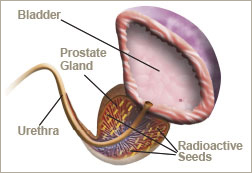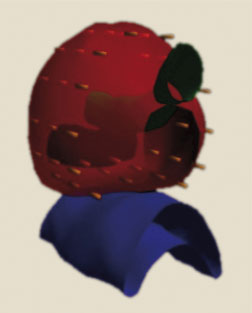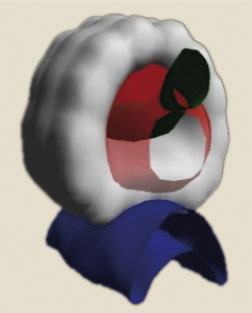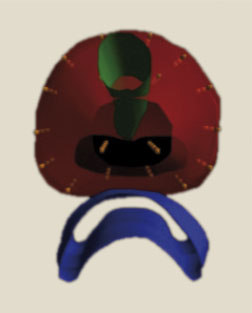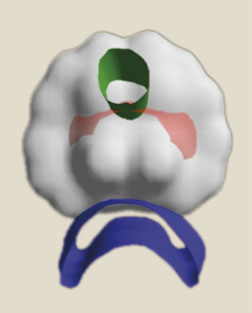
4D Brachytherapy for improved clinical outcomes
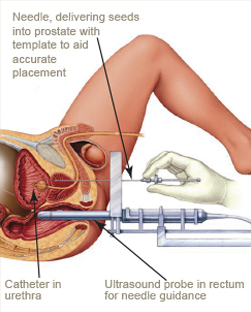
What is 4D Prostate Brachytherapy?
Brachytherapy is a targeted form of radiotherapy used for treating localised prostate cancer. Prostate cancer is described as localised where it is expected that the cancer cells (tumour) are contained within the prostate gland and the cancer has not spread outside it. Prostate brachytherapy is sometimes referred to as low dose-rate (LDR) brachytherapy or seed implantation.
'Brachy' means close. In prostate brachytherapy, tiny radioactive capsules (called seeds) are inserted directly into the prostate gland to target the dose of radiation as close to the cancer cells as possible. Cancer cells grow by dividing much more quickly than normal cells.
Rapidly dividing cells are the cells that are most susceptible to the effects of radiation. Therefore the radiation released from the brachytherapy seeds will kill the rapidly dividing cancer cells but the more slowly dividing normal cells will be less affected.
Radiotherapy
Radiotherapy or radiation treatment uses gamma- or x-rays to treat cancer. The radiation used is much stronger than that used for an ordinary x-ray picture. The dose of radiation given in radiotherapy is high enough to destroy cancer cells.
Cancer Cells (Tumour)
Our bodies are made up of millions and millions of tiny building blocks, known as cells, which normally grow, divide into two new cells (make copies of themselves) and then die in an orderly controlled way. When something goes wrong with this system and the cells begin to grow and divide in an uncontrolled way, after a time, enough of these abnormal cells (cancer cells) are produced to form a cluster, lump or lesion. This is called a tumour.
Prostate Gland
The prostate is a small gland about the size of a walnut, which lies just below the bladder. The tube draining the bladder, called the urethra, passes through the centre of the gland to the penis.
The valve mechanism, or sphincter, maintains continence and stops urine leaking out of the bladder. It is located below the prostate gland.
The prostate gland is part of the male reproductive system. It develops at puberty and continues to enlarge throughout life.
The prostate gland acts rather like a junction box. It allows the tubes that carry sperm from each testicle, and the tubes that drain from the seminal vesicles to meet and then empty their contents in to the urethra. (The seminal vesicles consist of two pouches that provide nutrients for the sperm and lie immediately behind the prostate).
At the point of orgasm sperm, seminal vesicle fluid and prostatic secretions enter the urethra and mix together forming semen. This is then ejaculated out through the penis by rhythmic muscular contractions.
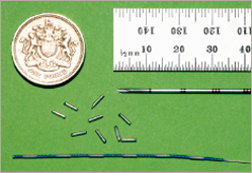
- Sizes of the seeds and needles used.
- How the needles are guided using a grid for precision and accuracy.
- The seeds in position.
What is 4D Prostate Brachytherapy?
In prostate glands that have been surgically removed, cancer cells are often found to be not just in one place within the gland. Typically there may be three or even as many as seven different places where the cancer cells may be located. To make sure the radiation is targeted and the treatment reaches the cancerous areas, the brachytherapy seeds are implanted throughout the prostate gland to release a field of radiation that matches the shape and size of the prostate gland being treated.
Accurately targeting the radiation in this way avoids overexposing the areas of the body immediately surrounding the prostate gland, such as the bladder, rectum, and the nerves that go to the penis, to the effects of radiation.

What is 4D Prostate Brachytherapy?
Each seed is a tiny canister made of titanium, the size of a grain of rice (4.5mm long by 0.8mm diameter) which contains a small amount of radioactive material. This radioactive material is iodine125, also sometimes written as I125. Most of the radiation is released from the seeds into the prostate gland over the first 60 days. The seeds continue to be biologically active for about 9 months in total. After that, they are biologically inactive.
Between 60 and 120 seeds are permanently inserted into the prostate gland. The exact number used will depend on the size of the prostate gland and the location of the cancer cells within it.
